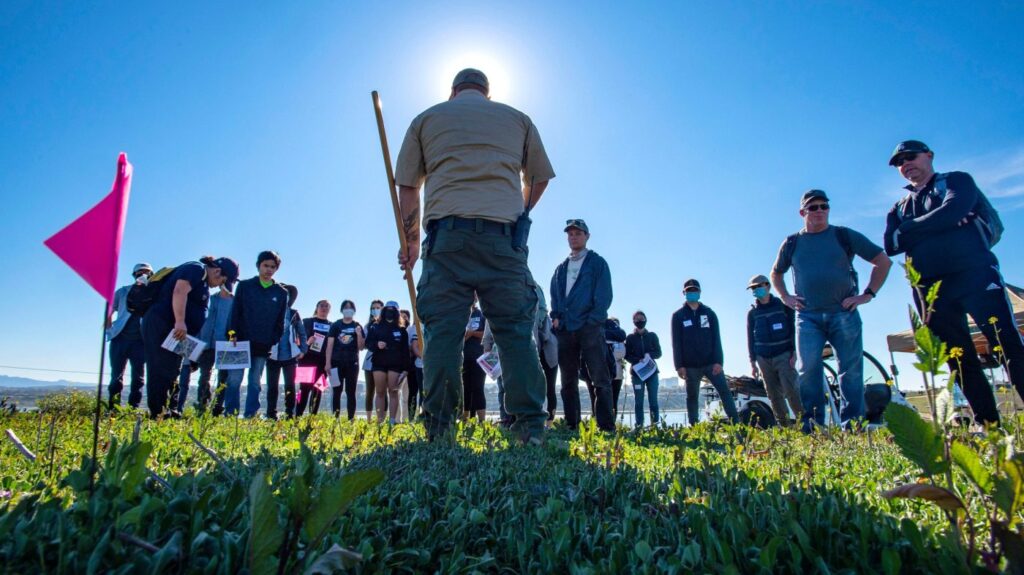
It’s a pesky plant that doesn’t belong in the Upper Newport Bay, an estuary filled with sensitive species that rely on the natural landscape.
A team started work on Saturday, Feb. 26, pulling Egyptian knapweed, an invasive species that has sprouted up in the tucked-away bay, measures needed so it doesn’t overtake other native plants that call this area home. Work is expected to continue in coming months.
While the Egyptian knapweed, scientific name Volutaria tubuliflora, is not yet widespread, its removal is necessary before the growth becomes out-of-control, said Nathan Taxel, resource specialist with OC Parks.
Taxel said it’s unknown how it got to Southern California, likely coming from the Middle East, but records go back to the ’80s of it appearing in the Upper Newport Bay. It has also been reported south in San Diego at Anza-Borrego Desert State Park, he said.
“Based on its physiology, it has the potential to be much more widespread,” Taxel said.
The key is to nip appearances in the bud before a plant invades – for example the black mustard plant’s yellow flowers now cover hillsides throughout the region.
“The challenge with plants moved by people and introduced to new environments is they can take over – they don’t have predators, there’s no fungi or parasites that attack them,” he said. “They drive out native plants that are host to our sensitive, endangered species.”
The invasive plant species can grow taller than native species such as coastal sage scrub, sagebrush and other shrubs that are slow growing and drought tolerant. Those plants can get “shaded out” by the invasive plants, which also drives out the species that call the estuary, a habitat mix of salt and fresh water, home.
Related links
Explore OC: Newport’s Back Bay is a paradise for birds, plants and people
Exploring OC: Santiago Oaks Regional Park offers 18 miles of hiking
Exploring OC: Hiking along Red Rock Canyon trail feels like you are in Arizona
Exploring OC: Protected tidepools offer glimpse at life between land and sea
Get out: Hiking in our National Forests
That can be tough on creatures such as the endangered California gnatcatcher, a bird that builds nests inside the native shrubs.
The latest crop of the Egyptian knapweed was spotted in 2015 and the efforts to remove it started in early 2020, but the coronavirus pandemic put a halt on gatherings that would have gotten rid the invasive plant, Taxel said.
Dry conditions in recent years kept the growth under control, but storms this winter have fueled its spread. There will be another pull in March and then it will be decided if more work is needed heading into spring, Taxel said.
“If we get more rain, we’ll get more growth,” he said. “If it stays dry, then we won’t need to pull again in April.”
Recent rains have not only sprouted Egyptian knapweed, but also wildflowers that are starting to bloom. Tours are starting for flower enthusiasts who want an early-season glimpse as spring nears.
Already, there’s about 18 to 20 wildflower species in bloom and it’s shaping up to be the best season since 2018-19, when there was a “super bloom” in areas across Southern California, Taxel said.
“The more rain we get, the more wildflowers we see,” Taxel said. “We have many interesting things to look at that didn’t grow last year or the year before when we were in more of a drought.”
